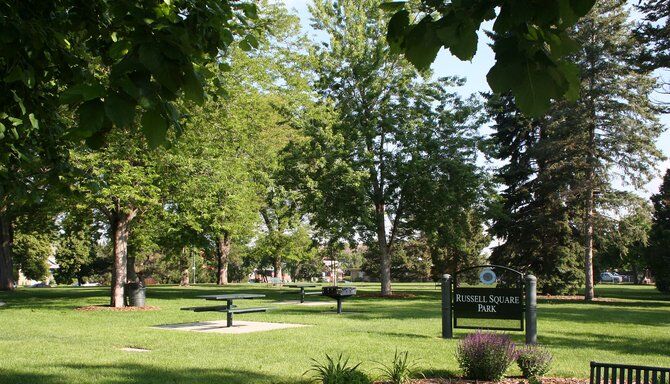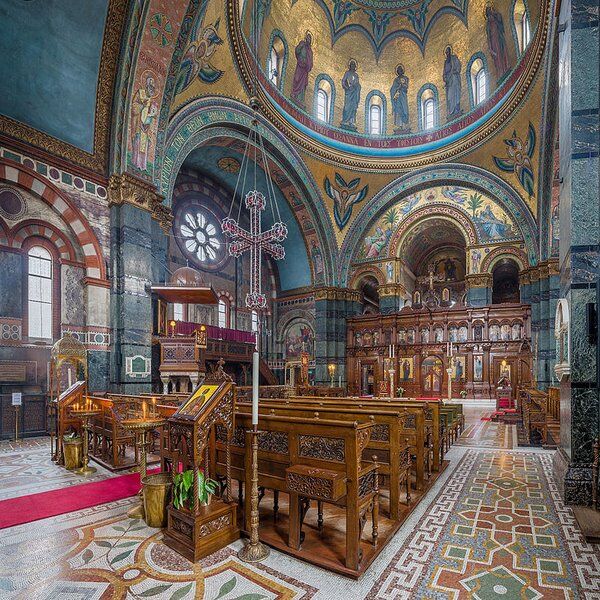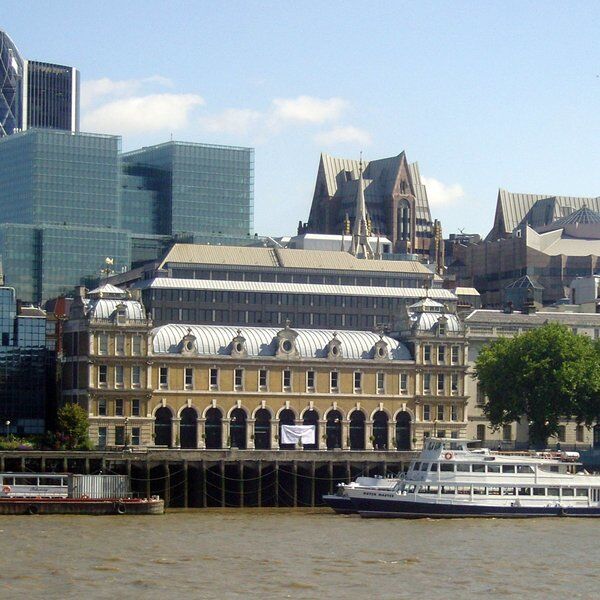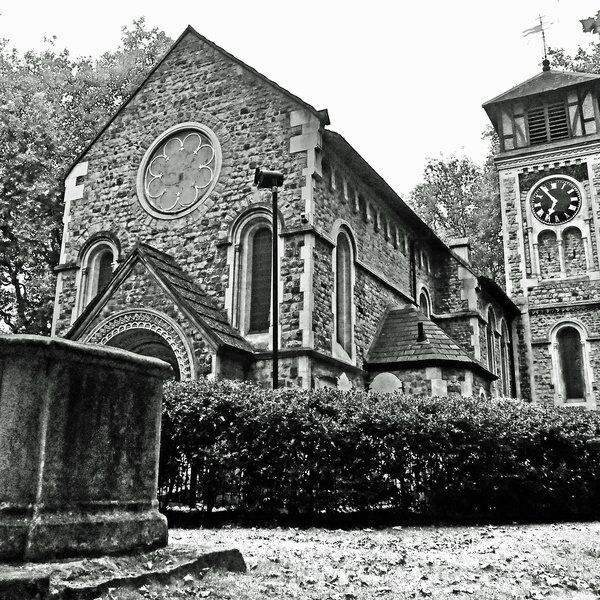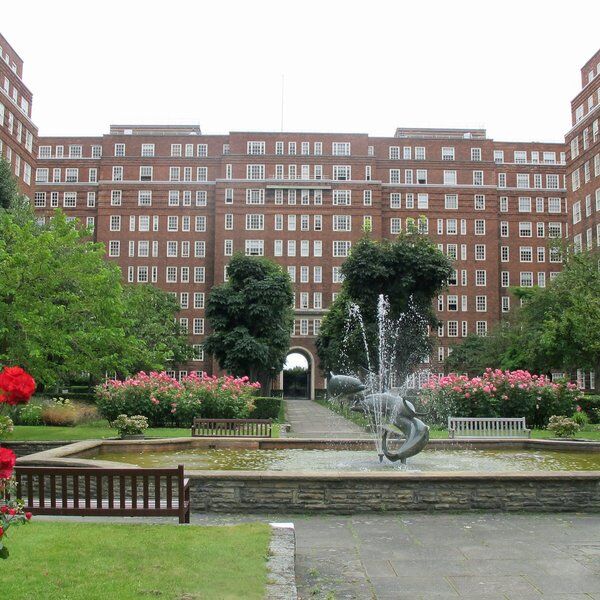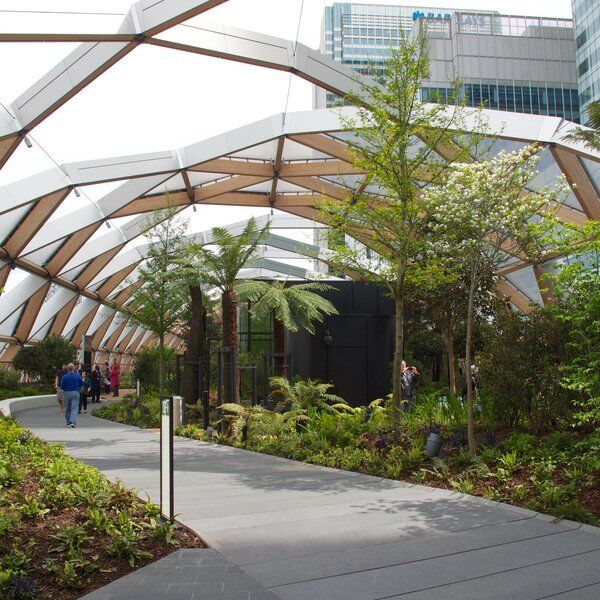Discover Russell Square
Russell Square in Bloomsbury is a sprawling garden square surrounded by stately Georgian terraces and landmarks like the British Museum and the University of London. With its lush lawns, quaint café terrace, and excellent transport links—including its very own Tube station—this square is a must-visit destination for anyone exploring London. Its central location and close proximity to major attractions like Oxford Street and Soho make it an ideal spot for a leisurely stroll or a quick escape from the urban hustle.
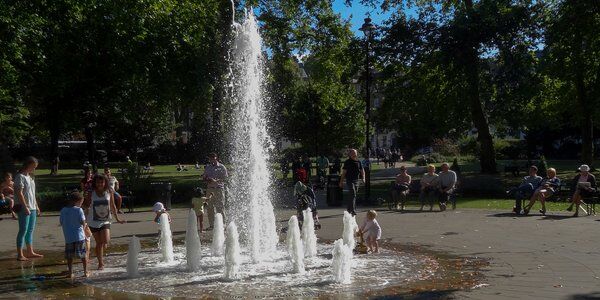
The History of Russell Square
The Early Roots of Bloomsbury
Russell Square occupies land once known as Long Fields, a rural area described in the Domesday Book of 1086 as fertile ground with vineyards and woodland sufficient to support 100 pigs. Over the centuries, the area passed through various hands—from William de Blemont in the 13th century to Edward III, who granted it to the monks of Charterhouse Priory.
By the 16th century, the land had been seized during the Dissolution of the Monasteries and was handed over to the 1st Earl of Southampton, a loyal advisor to Henry VIII. This transfer marked the beginning of the area’s transformation from farmland to estate land.
The Russell Family’s Grand Vision
Russell Square as we know it was envisioned by Francis Russell, 5th Duke of Bedford, in the late 18th century. Inheriting vast tracts of land in Bloomsbury, the Duke set out to develop the area into a refined urban district. He commissioned James Burton, one of the most successful property developers of the era, to construct the square and its surrounding streets. The first homes appeared around 1800 on the south side of the square, and Burton completed the rest over the following decade.
To complement Burton’s neoclassical terraces, the Duke hired celebrated landscape designer Humphry Repton to plan the central gardens. Repton’s design included a broad horseshoe-shaped walk flanked by lime trees trimmed to resemble a cloister. His elegant, symmetrical layout helped elevate Russell Square into one of London’s grandest squares, even surpassing Grosvenor Square in size.
Sadly, the Duke died in 1802 before the square’s completion. A bronze statue commemorating him now stands on the south side of the gardens.
19th-Century Residents and Cultural Connections
Throughout the 19th century, Russell Square became a sought-after address for professionals, artists, and the upper-middle class. It was home to Sir Thomas Lawrence, the prominent portrait artist, who kept a studio at No. 65 between 1805 and 1830. Later, the distinguished architect duo Philip and Philip Charles Hardwick lived at No. 60. And in the 1920s, T.S. Eliot worked nearby as poetry editor for Faber & Faber, commemorated today by a blue plaque on the northwest corner.
And fun fact: Richard D’Oyly Carte, the mastermind behind the Savoy Hotel and the Gilbert and Sullivan operas, used to jog around the gardens before jogging was even a thing. Ahead of his time in more ways than one.
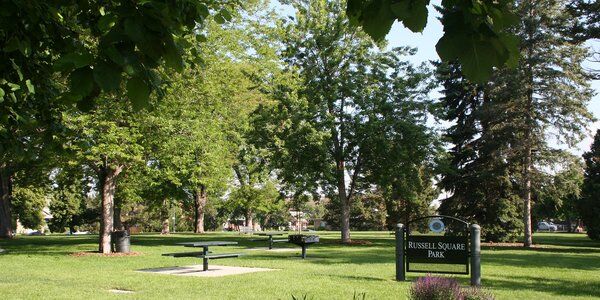
The Rise of the Grand Hotels
By the end of the 19th century, Russell Square welcomed two massive hotels that reflected Victorian opulence and ambition. The most famous is the Hotel Russell (now the Kimpton Fitzroy London), built in 1898 and designed by Charles Fitzroy Doll in a flamboyant French Renaissance style. Doll's love for decorative terracotta, lavish balconies, and intricate interiors not only gave the hotel its distinctive charm but also inspired the design of the first-class dining room aboard the RMS Titanic.
Doll’s second hotel, the Imperial Hotel, rose just a few years later but was sadly demolished in 1967. Its legacy lives on, however, with a new version of the Imperial Hotel currently under refurbishment and scheduled to reopen in 2025.
A Square of Learning, Innovation, and Refuge
Many of the original Georgian buildings remain—particularly on the southern and western sides—and now house esteemed institutions. Several are occupied by branches of the University of London, including SOAS (School of Oriental and African Studies). At Nos. 57–58, De Morgan House serves as the headquarters of the London Mathematical Society, which relocated there in 1998.
Since 2019, École Jeannine Manuel, a French international school, has operated out of 52–53 Russell Square. Other organisations, such as the Wiener Holocaust Library, add to the area’s cultural and educational significance.
A Public Space for the People
The once-private gardens were opened to the public over time and, in 2002, underwent a major restoration based on Repton’s original design. Managed today by Camden Council, the square has seen everything from Victorian flower shows to cabmen’s shelters—one of which, a relic of the 1875 Cabmen’s Shelter Fund, still survives.
Tragedy and Memorial
In more recent memory, Russell Square was affected by the 7th July 2005 London bombings, which included a deadly explosion on a Tube train traveling between King’s Cross and Russell Square stations. Another bomb detonated on a bus in nearby Tavistock Square. A memorial plaque and oak tree now stand in the gardens as a tribute to the victims.
In 2016, the square was again shaken by tragedy during a mass stabbing incident, reminding Londoners of both the square’s serenity and vulnerability.
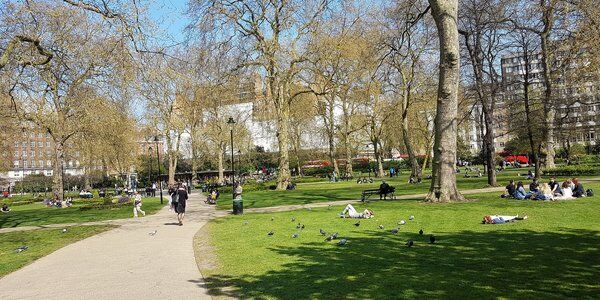
Who Was the 5th Duke of Bedford? (And Why Was His Hair a Big Deal?)
Francis Russell, 5th Duke of Bedford, wasn’t just any old aristocrat—he was a bit of a trendsetter. And not just in the political or garden design sense. No, he made his mark on fashion history—specifically, hair history.
Back in the late 1700s, men were shedding their powdered wigs (yes, those itchy, floury head-toppers) thanks to a combination of French Revolution vibes, a national flour shortage, and a particularly annoying tax introduced by Prime Minister William Pitt the Younger. This tax charged blokes for the privilege of powdering their noggins—outrageous!
Enter the Duke of Bedford. Fed up with powdered pomposity, he ditched his wig and adopted a more natural, close-cropped look. Not content to quietly switch up his style, he dared his friends to do the same—and just like that, the "Bedford Crop" was born.
His new hairstyle was short, neatly parted, and lightly waxed—basically the Regency era's version of a modern fade. It sparked a movement. Wigs went out, curls came in, and soon gentlemen across the country were channeling Roman emperors and Greek Gods with artfully tousled locks. The Brutus, the Titus, even the wild-eyed “frightened owl” look (achieved with bear-fat pomade and, er, very rare washing) all had their moment in the Regency spotlight.
So next time you stroll past the Duke's statue in Russell Square, give him a nod—not just for the gardens, but for helping men embrace their natural hair long before it was cool.
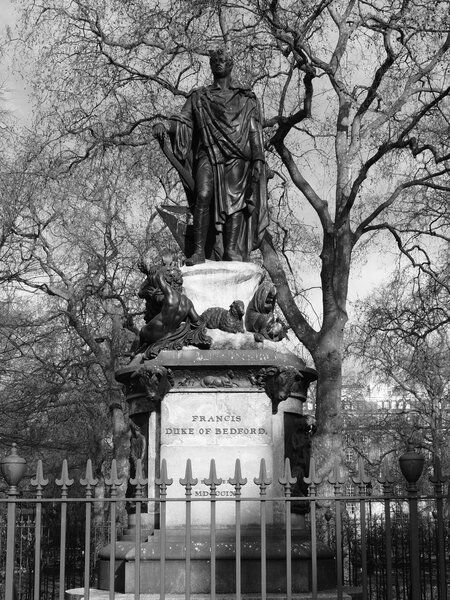
Russell Square in Pop Culture
Russell Square isn’t just for strolls and sandwiches—it’s also starred in a surprising number of novels, films, and TV shows. If you've ever had that déjà vu feeling while sitting on a park bench here, you're probably not wrong.
Fans of period drama might remember Vanity Fair by William Makepeace Thackeray, where the square is home to the respectable Mr. John Sedley. Virginia Woolf also brought the square to life in Night and Day, and in A Civil Contract, Georgette Heyer’s characters even debate the Duke of Bedford’s statue (spoiler: not everyone’s a fan).
Murder mystery buffs, you’re covered too. In The Murderer Lives at Number 21, the titular villain supposedly hails from a Russell Square address—though Hollywood decided otherwise in the film version. And in John Dickson Carr’s locked-room classic The Hollow Man, the ill-fated Professor Grimaud resides on the square’s west side.
More recently, Russell Square popped up in the BBC’s Sherlock, where Dr. Watson rekindles a friendship over a chat in the gardens. And bookworms will love that the hilarious sitcom Black Books placed its chaotic little bookshop just around here too.
It’s safe to say that Russell Square has a star-studded CV. Whether you’re into Regency romances or wizarding police (hello, Rivers of London), this square’s got something for every story lover.
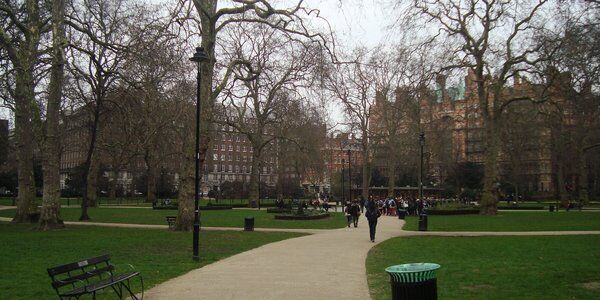
Things to Do at Russell Square
Wander Through Russell Square Gardens
Once the private playgrounds of posh Londoners, garden squares like these were all the rage in the 1800s. But unlike many leafy London enclaves, Russell Square has flung open its gates to the public—and we’re so glad it did.
Sip and Snack at Caffè Tropea
Hidden among the foliage, you’ll find one of central London’s best-kept secrets—Caffè Tropea, a charming family-run Italian café that’s been doing its thing for over four decades. They’ve even got their own coffee blend and merch, so you can take a little piece of Russell Square home with you.
Spot a Rare Cabmen’s Shelter
Just around the corner from Caffè Tropea, keep your eyes peeled for a curious green hut. This is one of London’s last surviving cabmen’s shelters—a tiny teahouse originally built to give Victorian cabbies a place to grab a bite and a brew. Only licensed cab drivers can sit inside, but the public is welcome to swing by for a bacon roll or cuppa on the go.
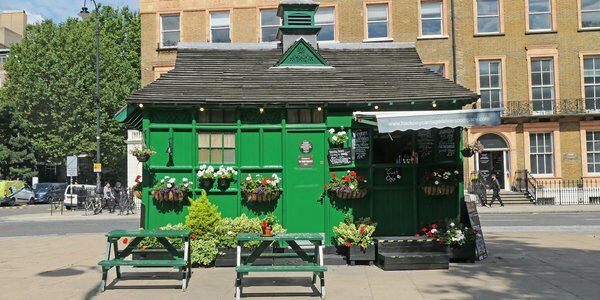
Visiting Russell Square: What You Need to Know
Getting to Russell Square is a breeze, even if you’re not a London local. Here’s the lowdown:
Hop on the Tube
Russell Square Station is right next to the gardens on Bernard Street, housed in a gorgeous Art Nouveau building with deep-red tiles and throwback signage that’ll take you straight back to the early 1900s. It’s on the Piccadilly Line, which means:
- You’re a quick ride away from Heathrow Airport, Covent Garden, and King’s Cross.
- Nearby stations include Holborn (Central Line), Goodge Street (Northern Line), and Tottenham Court Road (Elizabeth, Central & Northern Lines).
Pro tip: This station has lifts instead of escalators, plus a spiral staircase if you’re feeling brave (and fit).
Take a Stroll
Russell Square is ideal for aimless wandering and people-watching. There’s a perimeter walk that loops around the gardens, and plenty of places to perch if you’re just here to soak it all in.
You’ll also find:
- An air-monitoring station (science is everywhere!).
- Towering trees like London plane, lime, and thorn.
- A tea pavilion in the northeast corner if you fancy a cuppa.
Things to Do Near Russell Square
If you can tear yourself away from the square, there’s loads more to explore within walking distance:
- The British Museum: Just up the road, and totally free. Mummies, marble, and the Rosetta Stone await.
- The Foundling Museum: A touching and powerful museum exploring Britain’s first children’s charity.
- The Charles Dickens Museum: Step into the life and home of the man behind Oliver Twist.
- The British Library: For literary nerds and rare manuscript lovers.
- Oxford Street, Soho, Covent Garden: All shopping, food, and entertainment heaven, a short walk away.
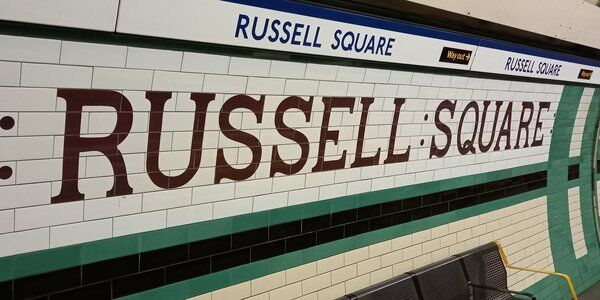
Explore Beyond Russell Square with CityDays
Feeling inspired to go even further afield? That’s where we come in!
CityDays offers interactive scavenger hunts and treasure trails that turn London into your very own playground.
Our trails aren’t just about ticking off landmarks—they’re packed with brain-teasing puzzles, hidden gems, and quirky local trivia. Whether you’re on a team-building adventure with colleagues or just want to shake up your weekend with friends, we’ve got a route that fits the bill.
We run experiences all over London—and the world—so when you're ready to ditch the dull tours and do something memorable, you know where to find us.
Game face on? Let’s go!
